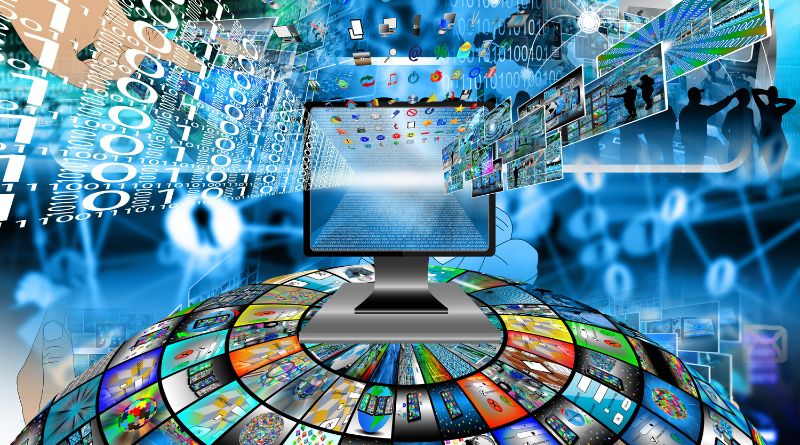The Internet of Things, or IoT, is a system of physical devices, vehicles, home appliances, and other items embedded with electronics, software, sensors, actuators, and PoE Network Switch, which enables these objects to connect and exchange data.
IoT is made up of things that talk to each other. By 2020, it is expected that there will be over 50 billion devices connected to the internet. That’s a lot of devices! And all of these devices will generate a massive amount of data. So what does this mean for us? This blog post will explore what IoT is and how it’s changing the world as we know it. Stay tuned to learn about the potential implications of this technology on our everyday lives.
What is the Internet of Things?
The Internet of Things, or IoT, is a system of interconnected devices and sensors that collect and share data. By connecting managed poe switch to the internet, businesses and individuals can automate tasks, improve efficiency, and make better decisions.
IoT devices can range from simple sensors to complex machines and can be found in homes, offices, factories, hospitals, cars, and more. Common examples of IoT devices include thermostats, security cameras, fitness trackers, and smart appliances.
Businesses can use IoT data to improve their operations and services. For example, a grocery store could track inventory levels and restock shelves automatically; a hospital could use IoT data to monitor patients’ vital signs, and a manufacturing company could use IoT data to optimize its production line.
Individuals can also use IoT data to improve their health and well-being. For example, a person with diabetes could use an insulin pump that is connected to an IoT sensor to regulate their insulin levels automatically; a person who is trying to lose weight could use a fitness tracker that is connected to an app to track their activity level and diet, and a person with allergies could use an air quality sensor that is connected to their smartphone to avoid areas with high pollution levels.
What are the benefits of IoT?
There are many benefits of IoT, but some of the most notable ones include the following:
1. Increased efficiency and productivity
2. Cost savings
3. improved customer satisfaction
4. better decision making
5. faster innovation cycles
How does IoT work?
IoT devices are connected to the internet and can communicate with each other via the MQTT protocol. They collect data about their surroundings and use that data to perform actions or provide information to their users.
IoT devices are usually equipped with sensors that collect data about their environment. That data is then transmitted to a computer or server, which can be analyzed and used to trigger specific actions. For example, a sensor in a thermostat could detect that the temperature in a room has dropped below a certain point and turn on the heat.
IoT devices can also be equipped with actuators to take action based on the data they collect. For example, a door lock could receive a signal from an IoT device that someone is trying to break into your home and automatically lock the door.
The possibilities for how IoT devices can be used are virtually limitless. With suitable sensors and actuators, IoT devices can be used for everything from monitoring your health to controlling your home’s energy usage.
What industries are using IoT?
IoT is used in many industries, including manufacturing, healthcare, transportation, retail, and agriculture. Additionally, many companies utilize IoT to improve customer service and optimize their operations.
What are some applications of IoT?
IoT applications are seemingly endless and range from mundane to life-saving.
The most well-known application of IoT is the Nest thermostat, which learns your heating and cooling preferences over time and programs itself accordingly. This not only saves you the hassle of having to adjust the temperature yourself but can also save you money on your energy bill.
Other more mundane but practical applications include automatic light switches that turn on when you enter a room and smart locks that can be controlled remotely.
On the more innovative end of the spectrum, life-saving applications such as wearable devices monitor vital signs and send alerts to doctors in an emergency. IoT-enabled devices such as self-driving tractors and sensors monitoring soil moisture levels are also being developed for use in agriculture.
Read More: The Benefits of Social Media in Today’s Society
Are there any risks associated with IoT?
There are a few potential risks associated with IoT that need to be considered. One risk is data security and privacy. With so much data being collected and stored, there is a heightened risk of data breaches and cyber-attacks. Another risk is data overload. Too much data can lead to decision fatigue and make it difficult to glean insights from all the information. IoT devices often rely on sensors and other technology susceptible to malfunction or failure. This could lead to disruptions in service or even safety concerns if critical systems are impacted.
Conclusion
Internet of Things, or IoT, refers to the interconnectedness of physical devices and objects connected to the internet. This allows for data exchange between these devices and objects and between people and organizations. While still in its early stages, IoT has great potential to transform how we live and work by making our everyday lives more convenient and efficient. Are you ready to join the IoT revolution?

